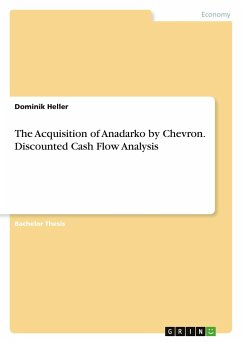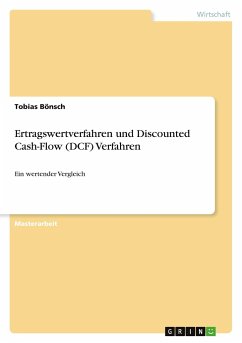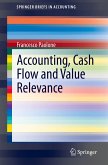Bachelor Thesis from the year 2003 in the subject Business economics - Investment and Finance, grade: 1,3 (A), Northumbria University (Newcastle Business School), language: English, abstract: This study investigates the underlying theories and assumptions of two modern capital market-based valuation approaches, the Discounted-Cash-Flow (DCF) and the Economic-Value-Added (EVA) approach, which are nowadays applied principally for industrial and manufacturing firms. This general examination is then transferred into a more specific investigation exploring whether these valuation concepts can be applied to the strongly regulated and more specific field of bank valuation. A questionnaire addressing bank analysts was created to analyse this question. The project indicates that the ideas of shareholder value which have been enforced over the last decade have implemented the need for a more shareholder-focused valuation. The application of DCF is basically attributed to this movement. It is revealed that this concept uses cash flow streams which depict a more realistic picture of an organization's true earning power. Moreover, it employs a discount rate based on the capital market and thus reflecting the yield expectations of the investors. EVA, on the other hand is a relatively new concept, copyrighted in 1994 by Stern Stewart. It highlights an organization's true economic profits. The study examines its components NOPAT, Capital and Cost of Capital, establishes a relation to DCF, points out some general limitations due to the fact that it falls back on accounting figures and critically assesses its dependence on the CAPM whose inherent assumptions of efficient markets that are not transferable into reality, might affect the valuation. The primary research undertaken finally reveals that the concepts of DCF and EVA are basically suitable to be applied to the valuation of banks. However, there are some peculiarities, primarily due to difficulties associated with the definition and measurement of debt and reinvestments which make slight adjustments in the valuation process indispensable. Nevertheless, the end result is just as effective as in other industries.
Hinweis: Dieser Artikel kann nur an eine deutsche Lieferadresse ausgeliefert werden.
Hinweis: Dieser Artikel kann nur an eine deutsche Lieferadresse ausgeliefert werden.








